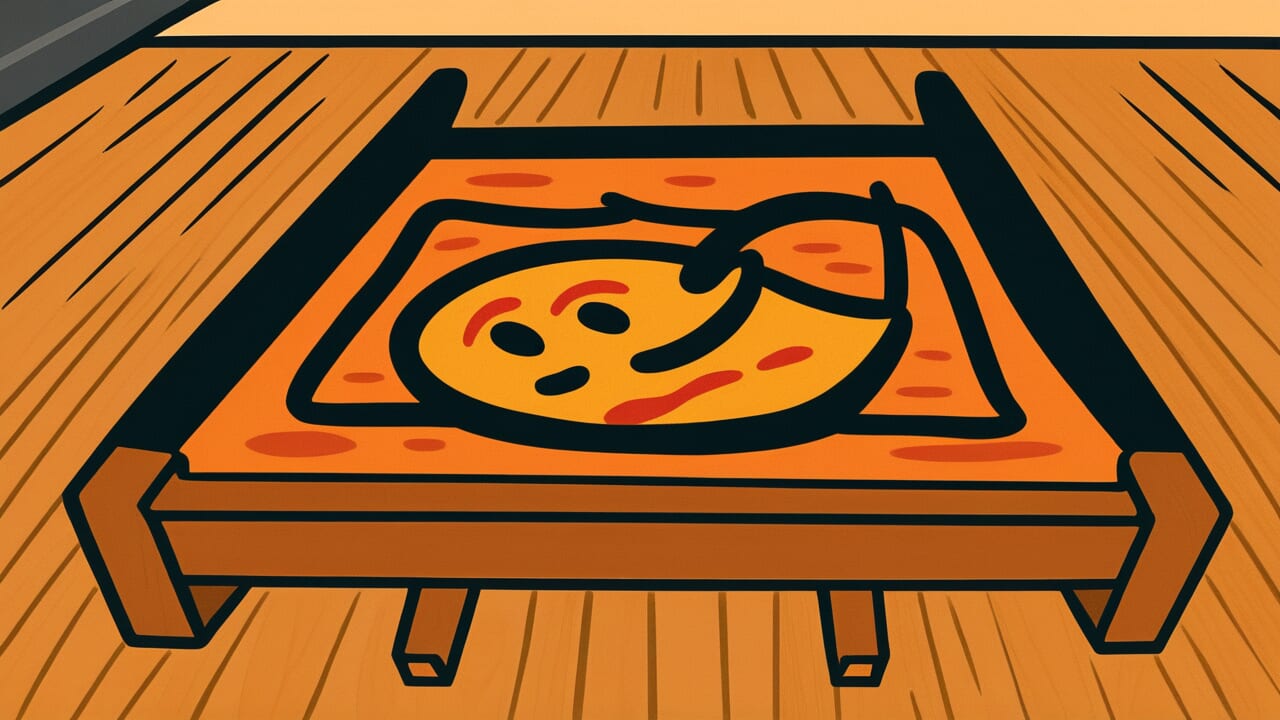How to Read “One plank below is hell”
Itago ichimai shita wa jigoku
Meaning of “One plank below is hell”
This proverb describes an extremely dangerous situation during sea travel. Only a thin plank separates life from death.
Below the ship’s bottom lies the deadly sea. If that single wooden plank breaks or comes loose, lives are immediately at risk.
The saying warns us that even seemingly safe situations can be dangerously close to disaster. What looks peaceful on the surface can change completely with one small mistake.
Today, people use this proverb to describe dangerous jobs or risky situations. It expresses the feeling of being in circumstances where you cannot let your guard down.
Origin and Etymology
This proverb likely originated from the dangers of sea travel during the Edo period. Ships were made of wood, and the planks forming the hull were surprisingly thin.
Only that thin plank separated the living space above from the deadly sea below. Life and death truly hung by a thread.
“Itago” refers to the planks at the bottom of a ship. For people in the Edo period, sea travel was far more life-threatening than we can imagine today.
Sudden weather changes could capsize a vessel. A single cracked plank could cause flooding and sinking.
Important commercial routes connected Edo and Osaka. Northern trade ships sailed the Japan Sea. Many people traveled these dangerous waters regularly for business.
Sailors faced this reality daily. Only thin planks protected their lives. This concrete experience gave birth to the expression.
Over time, the saying spread beyond sea travel. It came to describe any situation where danger lurks beneath apparent safety.
Interesting Facts
Edo period shipwrights carefully balanced plank thickness and strength. Thicker planks meant greater safety but also heavier ships with slower speeds and less cargo capacity.
Thinner planks allowed faster, lighter sailing but compromised safety. This delicate balance created the reality behind “One plank below is hell.”
Sailors had a custom of tapping the hull before departure. They checked the planks’ condition by listening to the sound.
Deteriorating planks produced different sounds. Experienced sailors could detect danger just by listening.
Usage Examples
- They say that profession is “One plank below is hell,” and truly, every day brings danger
- Even peaceful daily life is “One plank below is hell”—you never know what might happen
Universal Wisdom
This proverb has endured because it addresses a fundamental human anxiety. It shows us wisdom for facing our deepest fears.
We all live on various “thin planks” every day. Health, work, relationships, financial stability—all rest on surprisingly fragile foundations.
Humans tend to feel secure when they see visible safety. Even living on a ship, we forget about the deep ocean below when we feel solid planks beneath our feet.
Our ancestors understood this forgetfulness. They used the concrete image of “one plank” to remind us to stay aware of hidden dangers.
But this proverb also celebrates human courage. People knew that one plank below was hell, yet they still boarded ships and crossed seas to reach new lands.
They moved forward despite recognizing the danger. That is human strength. This saying teaches us not just to fear, but to act with courage while understanding risk.
When AI Hears This
The boundary of a single ship plank perfectly embodies what complexity science calls a “critical state.” Imagine dropping sand grains one by one onto a pile.
At some moment, a massive avalanche suddenly occurs. The state just before that collapse is the critical state.
The crucial point is that the final grain is not special. When the entire system reaches its limit, any tiny change can trigger catastrophic phase transition.
The physical boundary of a ship’s plank is only a few centimeters thick. Considering water pressure and wave impact, this thinness is remarkable.
But the essence is not thickness. It is the structure of a system constantly balanced on a critical point.
If the plank is intact, safety is 100 percent. With one crack, danger becomes 100 percent. No intermediate state exists.
This is the very characteristic of phase transition. Water at 99 degrees and 100 degrees divides into liquid and gas. State changes dramatically across the boundary.
Even more fascinating is that sailors intuitively understood this “nonlinearity.” If plank damage increases 10 percent, danger does not increase by just 10 percent.
The moment a certain threshold is crossed, danger jumps to infinity. Modern fracture mechanics proves this phenomenon with equations.
Sailors understood it through bodily sensation. In systems at critical states, the very concept of safety margin becomes an illusion.
Lessons for Today
This proverb teaches modern people the importance of imagining invisible dangers. Modern society has become convenient and comfortable.
But the systems supporting that comfort may be surprisingly fragile. Electricity, water, internet, logistics—while these function normally, we forget how thin the plank is.
So let us pause sometimes and think. What “thin planks” support our lives and work?
What if we lost our health? What if important relationships broke? What if income stopped?
Thinking this way is not being pessimistic. Rather, it helps us recognize the value of our current happiness and cherish it more.
Recognizing danger also allows us to prepare. Buying insurance, saving money, developing skills, valuing relationships—these are all wise actions taken knowing the plank is thin.
Inspect the plank beneath your feet. Reinforce it if necessary. That is the modern wisdom this proverb teaches.



Comments